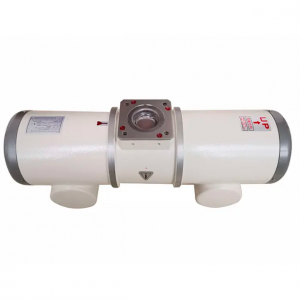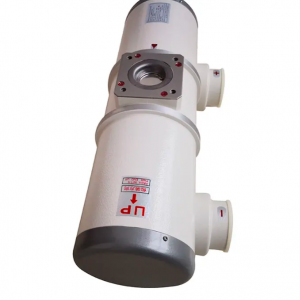In the field of radiography, x-ray tube housings play a vital role in ensuring accurate imaging and the safety of patients and healthcare professionals. From radiation protection to maintaining a proper operating atmosphere, this blog explores the various components and functions of X-ray tube housings.
1. X-ray radiation protection:
While providing effective imaging, the x-ray tube housing acts as a shield from harmful radiation emitted during the imaging process. The housing is designed with high-density materials that absorb most of the X-ray emission, minimizing exposure to ionizing radiation. In addition to protecting the surrounding environment, it also protects the fragile internal components inside the tube, ensuring its durability.
2. Dielectric oil:
Dielectric oil is an integral part of the X-ray tube housing. It acts as an electrical insulator, preventing current from flowing between the different parts of the tube. The oil also helps cool the case, helping to prevent overheating. Regular maintenance and monitoring of the dielectric oil level is essential to ensure smooth operation and avoid any breakdowns.
3. Operating atmosphere:
Maintaining a proper operating atmosphere within the X-ray tube enclosure is critical to proper operation. The atmosphere is usually controlled to enhance electrical insulation and cooling. The air pressure inside the enclosure must be monitored and regulated to prevent the formation of air bubbles that interfere with X-ray beam generation.
4. Adjust the tube current:
The intensity of the emitted X-ray beam can be controlled by adjusting the current through the X-ray tube assembly. By controlling tube current, radiographers can optimize image quality while minimizing patient exposure to radiation. Recommended dosing guidelines must be followed and the x-ray machine calibrated periodically to ensure accurate current adjustment.
5. X-ray tube shell temperature:
Maintaining the proper temperature within the X-ray tube housing is critical to performance and longevity. Excessive heat can degrade the performance of internal components, which can lead to malfunction or poor image quality. Implement regular monitoring and cooling mechanisms, such as fans or temperature sensors, to keep the enclosure within a safe temperature range.
6. Operating restrictions:
X-ray tube housings have specific operating limits listed by the manufacturer. These limitations include factors such as maximum tube voltage, current and duty cycle. Adherence to these limits is critical to prevent housing damage and to ensure consistent and reliable image quality. Regular inspection and maintenance help identify potential violations of operating restrictions and make necessary adjustments.
7. Identify the fault:
Even with regular maintenance, malfunctions or abnormalities can occur within the X-ray tube housing. There must be a diagnostic system in place to identify any deviation from normal operation. Implement regular testing and quality control protocols to promptly identify and resolve any issues, ensuring uninterrupted and accurate radiography services.
8. Disposal:
When an X-ray tube housing reaches the end of its life cycle or becomes obsolete, proper disposal methods must be followed. E-waste regulations should be followed due to the possible presence of hazardous substances such as lead. Consideration should be given to recycling or contacting professional disposal services to minimize adverse impact on the environment.
in conclusion:
X-ray tube housings play a vital role in protecting against harmful radiation and ensuring optimal performance of radiography procedures. By understanding the importance of each component and adhering to operating protocols, healthcare professionals can ensure safe, accurate imaging for patients. Regular maintenance, monitoring, and adherence to recommended guidelines and limits are critical to providing the highest level of care and minimizing potential risks associated with X-ray radiation.
Post time: Jul-03-2023



